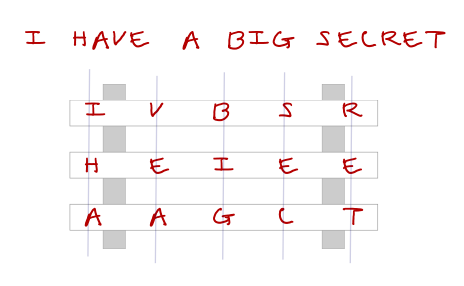In a world where communication reigns supreme, the art of encoding messages using ciphers emerges as a fascinating endeavor. Each cipher serves as a formidable guardian of thoughts, cloaking intentions beneath layers of cryptographic mystery. Much like an artist wielding a brush, anyone can delve into this realm without a PhD. This article presents an accessible exploration of crafting your first cipher.
The beauty of cryptography lies in its versatility. Each cipher crafts an eloquent narrative, transforming ordinary text into an enigma. Imagine words dancing in the shadows, effortlessly concealing their essence. This transformation is not a mere trick but a celebration of creativity and intellect. Crafting a cipher requires not only the application of techniques but also the creative flair to weave a tapestry of secrecy.
To embark on this cryptographic journey, one must first comprehend the essence of a cipher. At its core, a cipher is a method for transforming readable text (plaintext) into an inscrutable form (ciphertext). This alteration can be executed through a variety of techniques, each with its own unique charm and complexity. The classical ciphers serve as a splendid starting point for novices, providing both simplicity and depth.
Let us delve into the realm of the Caesar cipher. Named after Julius Caesar, who purportedly employed it to safeguard military communications, this cipher exemplifies elegance in its simplicity. By shifting each letter of the alphabet by a fixed number—let’s say three spaces—the integrity of the message is obscured. For instance, the word “HELLO” would transmogrify into “KHOOR.” This straightforward approach allows you to encode even the most mundane messages into a secretive language. While the Caesar cipher is inherently limited and easily decipherable, it serves as an introductory paradigm for budding cryptographers.
Expanding upon this foundation, we encounter the substitution cipher—a more elaborate technique. Here, letters are substituted for other letters throughout the alphabet. The key to this cipher lies in the randomization of the letter mapping. Imagine a jigsaw puzzle where every piece represents a letter; this cipher invites you to shuffle the pieces around. For example, replacing ‘A’ with ‘M’, ‘B’ with ‘Z’, and so forth, creates an unexpected array of ciphertext. This method offers increased complexity compared to the Caesar cipher, transforming mundane conversation into a labyrinth of intrigue.
To further elevate one’s ciphering skills, the Vigenère cipher beckons. It introduces the concept of a keyword, employing it to dictate the shifting of each letter, thus shrouding the message even further. By using a keyword, one can establish an intricate pattern of shifts. For instance, if the keyword is “KEY” and the plaintext is “HELLO,” the first letter will be shifted by the letter ‘K,’ the second by ‘E,’ and the third by ‘Y,’ leading to a unique encoding for each letter. This method dilutes predictability and enriches the cipher with layers of sophistication.
However, the allure of ciphers is not limited to their construction but extends to the personal engagement they facilitate. Crafting a cipher embodies a paradoxical blend of solitude and connection. While one might sit alone in contemplation, transforming words into cryptographic masterpieces, the ultimate goal is communication—a desire to share secretive thoughts with a select few. Through the creation and exchange of ciphers, individuals cultivate a sense of camaraderie, forging connections on a different intellectual plane. The thrill of deciphering another’s work or conversely, deciphering your own cipher speaks to the intricate bond formed through cryptographic dialogue.
What often elevates a simple cipher to remarkable art is the storytelling it encapsulates. Just as a painter chooses colors and shapes to evoke emotion, so too can a cipher convey layers of meaning beyond mere letters. The notion of crafting a cipher can serve as a metaphor for how we guard our feelings and ideas, fashioning barriers that seek to protect our inner selves. In a world rife with transparency, ciphers offer an exquisite layering of privacy. They allow us to engage with our own complexities while inviting the curiosity of others to decode the enigmatic messages we wish to share.
As with any artistic endeavor, practice enhances proficiency. Engaging in community, whether through online forums or local clubs, can further enrich one’s ciphering skills. Sharing your creations, gaining feedback, and experimenting with various techniques opens the doors to endless possibilities. With every new cipher crafted, the novice transitions into a more nuanced understanding of the intricate world of cryptography. Like an ancient manuscript longing to be discovered, every cipher carries its own story, waiting to unfold.
In conclusion, the realm of ciphers is an inviting space for those eager to weave their cryptographic tapestry. From the foundational Caesar cipher to the sophisticated Vigenère cipher, each technique offers unique possibilities for expression and communication. By embracing this art form, individuals not only protect their words from prying eyes but also foster a deeper understanding of what it means to connect through secrecy. The allure of ciphers transcends mere language manipulation; it is an exploration of self and an invitation to share in the mysteries of communication.







Leave a Comment